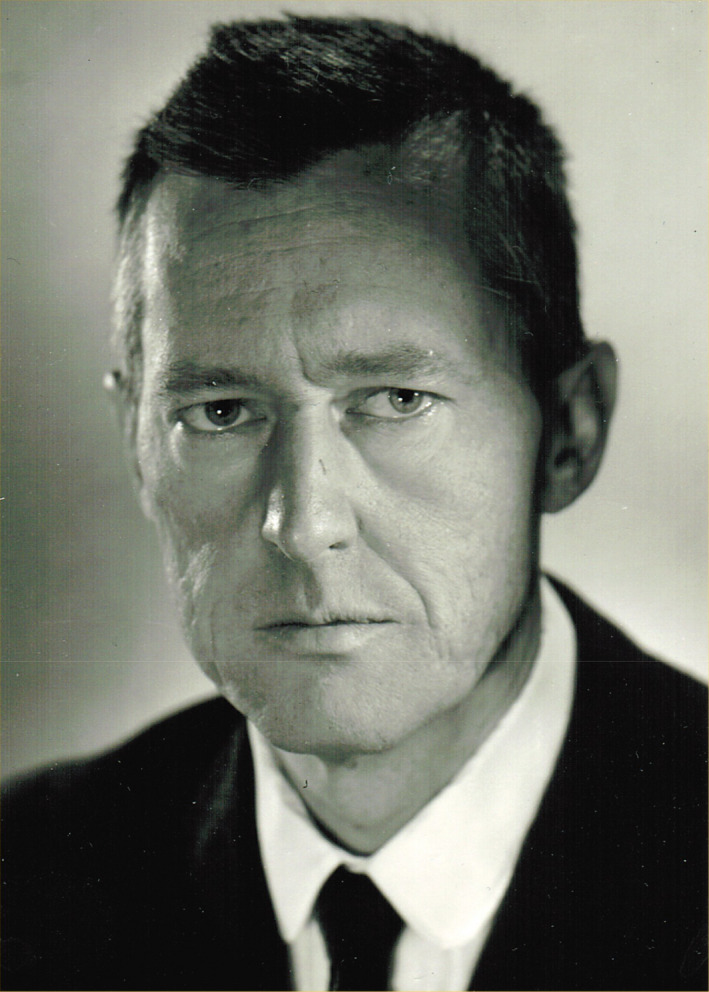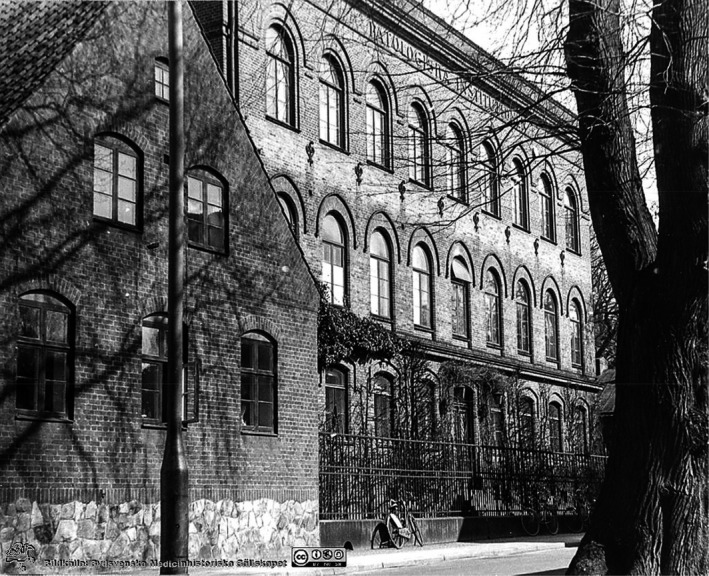A recent article in Journal of Experimental Medicine by Susan Weiss on ‘Forty years with coronaviruses’ is very informative and gives the history of research in this expanding field in a time of pandemic (1). In her Fig. 1, a timeline of these forty years of research is presented with two pathogenic human coronaviruses named for the early years 1960–1970. There are, however, no references given to the origin of these strains.
Fig. 1.

Dr Bertil Hoorn (Copyright Gun Hoorn).
Who were behind the isolation of these two coronaviruses in Fig. 1, OC43 and 229E (1)? The first one, OC43, was isolated and detected by Kenneth McIntosh et al. working at NIH, Bethesda, Maryland, USA (2). He was using an organ culture method and refers to Hoorn and Tyrrell for this technique (3). The second coronavirus in the timeline, 229E, was isolated and described by Almeida and Tyrrell (4). They also described a similar virus isolated earlier (5), B814, and the excellent electron microscopic images by June Almeida later led to the name corona (6). These two strains were very early coronaviruses isolated from human sources, and this reference is often given for the first isolation of coronavirus in man. However, as rightly pointed out by Elisabeth Mahase in British Medical Journal of this year (7), the very first description was for the one just mentioned, strain B814, and in the very same journal, BMJ (5). It is, however, very interesting to note that the method of isolation used in all these early investigations was the organ culture method of Hoorn (8), a fact that is often overlooked.
The organ culture method used was described by Hoorn and by Hoorn and Tyrrell (8, 9). Dr David Tyrrell was the head of the famous ‘Common Cold Research Unit’, Salisbury, England, run by Medical Research Council, MRC, England. But who was Hoorn?
Dr Bertil Hoorn was a Swedish ENT medical doctor who got intrigued by common colds and their causative agents. He had a true explorative mind and he returned to the basic sciences and started a research project at the Department of Medical Microbiology, University of Lund, Lund, Sweden. The department had earlier seen both professor John Forssman (discoverer of the Forssman antigen) and professor Arvid Lindau (von Hippel‐Lindau disease) as heads of the department. The professor and head in the 1960s was Rune Grubb, who discovered the inheritable Gm groups of the immunoglobulins.
At the same time we, the present authors, were young medical students with interest in microbiology who had joined the same department. We got to know Bertil Hoorn quite well and one of us, E.N., even shared laboratory space. Bertil Hoorn worked hard on setting up organ cultures of tracheal tissue. With synthetic media, he managed to keep the organs alive with beating ciliae. He presented his innovation at meetings and in a scientific article (8). Dr David Tyrrell heard about the novel technique and invited Bertil Hoorn to set up his method at the Common Cold Research Unit in Salisbury. Bertil Hoorn accepted the invitation and loaded his Citroen car with all the equipment and reagents needed and drove to England. After initial problems with water quality, the method was working well. Together with David Tyrrell, Bertil Hoorn then published several papers on the successful isolation of upper respiratory tract viruses using this new method (3, 9, 10, 11, 12).
Back in Lund, Bertil Hoorn also worked on his academic career and wrote his PhD thesis in 1966 which was successfully defended at a public dissertation (13). His laboratory at the department was located in a wing where the virologists had set up their quarters (Fig. 2).
Fig. 2.

Department of Medical Microbiology, University of Lund, Lund, Sweden, in 1966 (Copyright Society of Medical History in Southern Sweden, Lund, Sweden).
Dr David Tyrrell in Salisbury continued to use the new organ culture method, and in 1967, he described the two coronaviruses isolated from cases of human infections (4). His coworker, June Almeida, was the very best electron microscopist at the time.
So the two strain names mentioned in the review by Susan Weiss and the first coronavirus isolated as described by Elisabeth Mahase had a further history, leading to an innovative young Swedish medical doctor, Bertil Hoorn, later professor of medical virology in Umeå, Sweden, who laid the methodological foundation for research on coronavirus infections in humans. This part of the history is also worth mentioning and to remember.
Conflict of interest
No conflicts of interest.
Kronvall G, Nordenfelt E. On the history of human coronaviruses. APMIS.2021; 129: 381–383.
References
- 1. Weiss SR. Forty years with coronaviruses. J Exp Med 2020;217. [DOI] [PMC free article] [PubMed] [Google Scholar]
- 2. McIntosh K, Becker WB, Chanock RM. Growth in suckling‐mouse brain of "IBV‐like" viruses from patients with upper respiratory tract disease. Proc Natl Acad Sci USA 1967;58:2268–73. [DOI] [PMC free article] [PubMed] [Google Scholar]
- 3. Hoorn B, Tyrrell DA. ON THE GROWTH OF CERTAIN "NEWER" RESPIRATORY VIRUSES IN ORGAN CULTURES. Br J Exp Pathol 1965;46:109–18. [PMC free article] [PubMed] [Google Scholar]
- 4. Almeida JD, Tyrrell DA. The morphology of three previously uncharacterized human respiratory viruses that grow in organ culture. J Gen Virol 1967;1:175–8. [DOI] [PubMed] [Google Scholar]
- 5. Tyrrell DA, Bynoe ML. CULTIVATION OF A NOVEL TYPE OF COMMON‐COLD VIRUS IN ORGAN CULTURES. Br Med J 1965;1:1467–70. [DOI] [PMC free article] [PubMed] [Google Scholar]
- 6. Almeida JD, Berry DM, Cunningham CH, Hamre D, Hofstad MS, Malucci L, et al. Virology: Coronaviruses. Nature 1968;220:650. [Google Scholar]
- 7. Mahase E. Covid‐19: First coronavirus was described in The BMJ in 1965. BMJ 2020;369:m1547. [DOI] [PubMed] [Google Scholar]
- 8. Hoorn B. RESPIRATORY VIRUSES IN MODEL EXPERIMENTS. Acta Otolaryngol Suppl 1964;57(Suppl. 188):138–44. [DOI] [PubMed] [Google Scholar]
- 9. Hoorn B, Tyrrell DA. A new virus cultivated only in organ cultures of human ciliated epithelium. Arch Gesamte Virusforsch 1966;18(2):210–25. [DOI] [PubMed] [Google Scholar]
- 10. Tyrrell DA, Hoorn B. The growth of some myxoviruses in organ cultures. Br J Exp Pathol 1965;46(5):514–8. [PMC free article] [PubMed] [Google Scholar]
- 11. Hoorn B, Tyrrell DA. Effects of some viruses on ciliated cells. Am Rev Respir Dis 1966;93(3 Suppl.):151–61. [DOI] [PubMed] [Google Scholar]
- 12. Tyrrell DA, Bynoe ML, Hoorn B. Cultivation of "difficult" viruses from patients with common colds. Br Med J 1968;1(5592):606–10. [DOI] [PMC free article] [PubMed] [Google Scholar]
- 13. Hoorn B. Organ cultures of ciliated epithelium for the study of respiratory viruses. Acta Pathologica et Microbiologica Scandinavica 1966;183(66):1–37. [Google Scholar]


